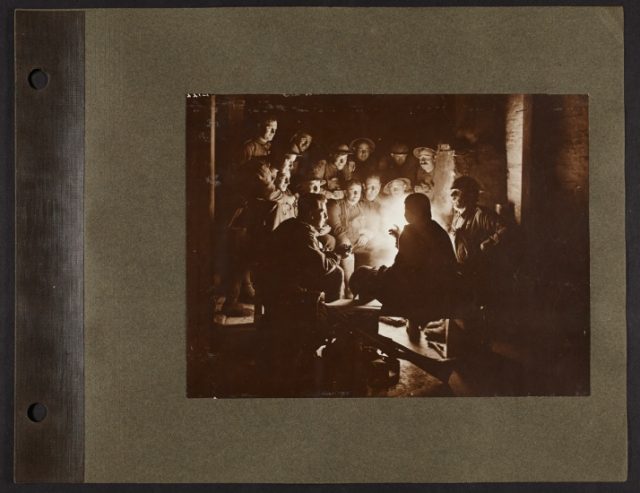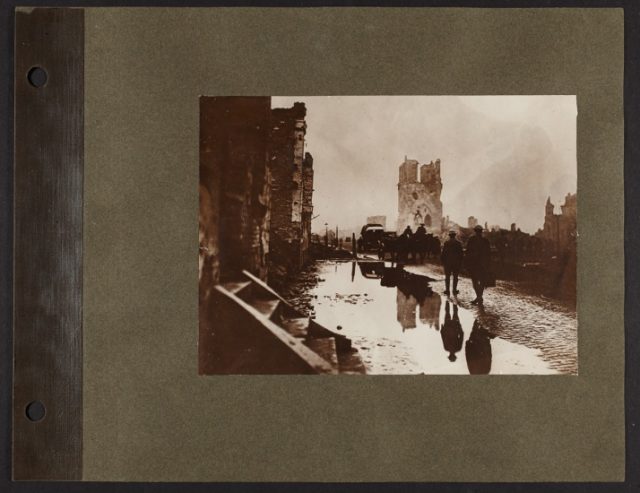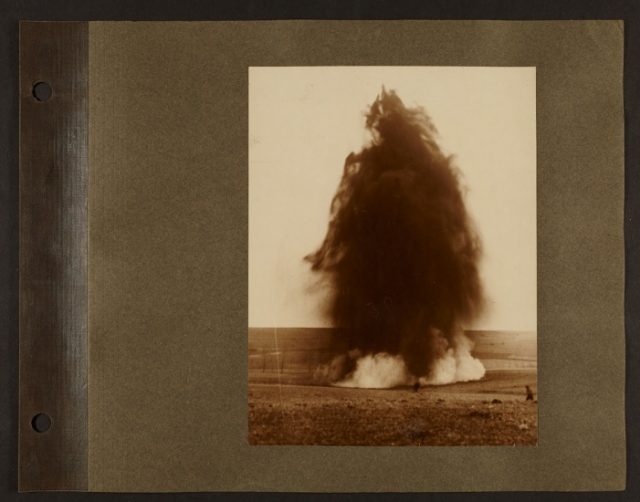Capturing the Front

James Francis "Frank" Hurley, Page 2 of Australian Units on the Western Front, 1914-1918. Album page: gelatin silver print, Image: 14.8 × 20.2 cm. Anonymous Gift, 2004.
From being stranded in Antarctica to photographing two World Wars, self-taught photographer and adventurer James Francis “Frank” Hurley lived an extraordinary life. Currently on view as part of our exhibition, Photography: First World War 1914–1918, his album, Australian Units on the Western Front, includes a special showcase of images Hurley daringly captured during World War I.
The photography bug bit Hurley early. He bought his first camera at 17 and started in the postcard business, where he quickly gained a reputation for capturing stunning images and being fearless. He once stepped in front of an oncoming train to get the perfect shot.
Later, as a member of the Endurance crew, he was stranded for two years in Antarctica during the infamous Shackleton expedition. Hurley’s images reveal what life was like for the crew after the ship, which later sank, was trapped by ice in the Weddell Sea.
In 1916, Hurley joined the Australian Imperial Force (AIF) as an honorary captain and official photographer. He arrived on the Western Front in August 1917. During his time there, he captured compelling photographs of soldiers, both in action and at ease.
In a 1917 diary entry, Hurley wrote, “I had the questionable excitement of being potted at by a sniper, the ping of his shot whizzing past only a few yards away. This did not deter me getting a fine series of pictures of how our chaps live in the trenches.”
Hurley also photographed the grim realities of war: casualties, destroyed landscapes and architecture. An increase in camera shutter speeds allowed photographers like Hurley to capture explosions for the first time.
Hurley also frequently created composite images, a technique using multiple negatives to make a single image, in an effort to convey the drama and scale of the war with the limited technology available at the time. While this brought Hurley into conflict with his superiors, including official war historian Charles Bean, who labelled his images as fakes, Hurley was later recognized by scholars and photographers for his experiments with how composing images can build drama.
During World War II, he once again returned to the Front. After the war, he continued to work as a photographer, filmmaker and journalist until his death in 1962.
A special showcase from Hurley’s album Australian Units on the Western Front is on view until October 28 in the Robert & Cheryl McEwen Gallery on Level 1, and is included in General Admission.
Are you an AGOinsider yet? If not, sign up to have stories like these delivered straight to your inbox every week.



